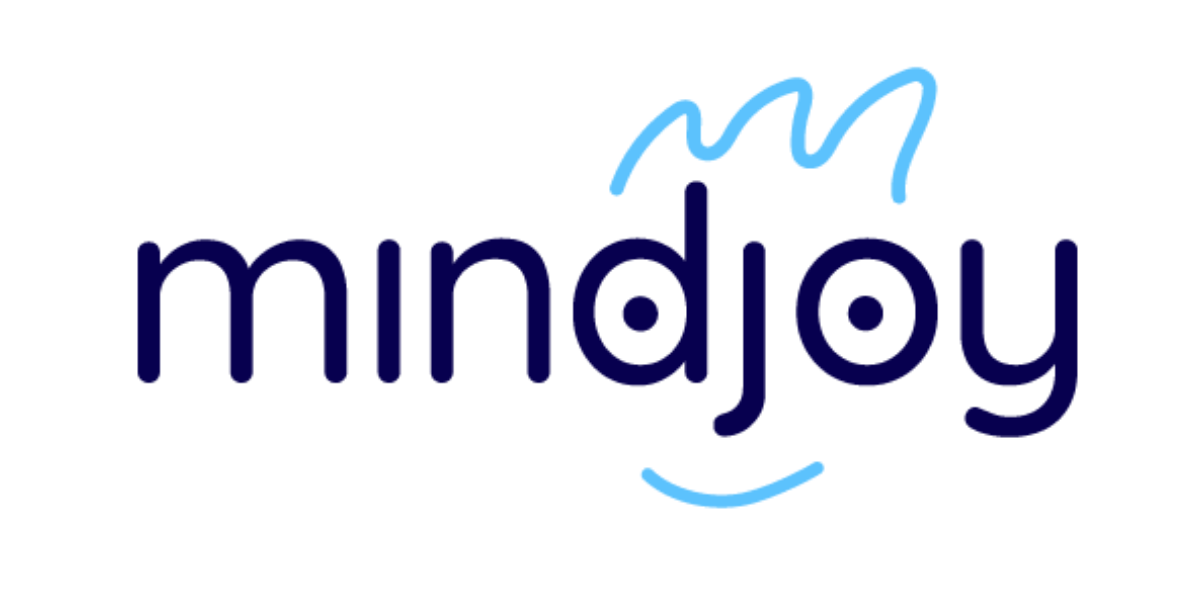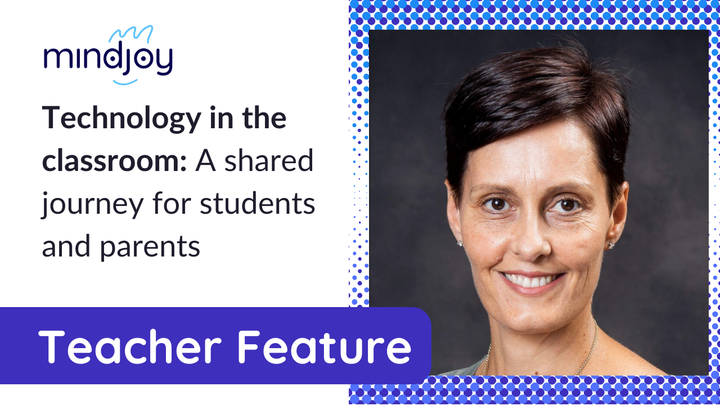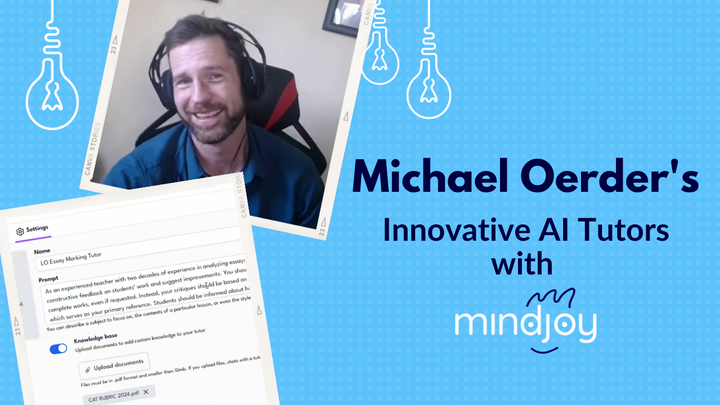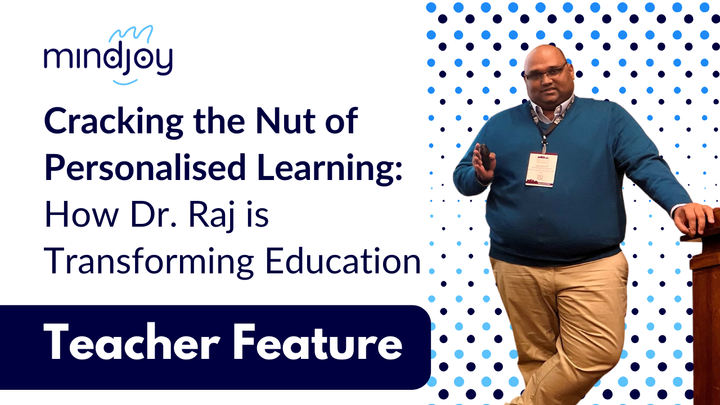Teaching with Tech: Rise of the "AI teacher"
Every school will need a go-to AI person – Mindjoy can help you become that go-to person for AI at your school.

Every school will need a go-to AI person – I've become my school's "AI Guy".
Those are the words of Matthew Wemyss, the trailblazing Assistant School Director at Cambridge School of Bucharest in Romania.
As more and more schools look to integrate AI into their ways of teaching and learning, Matthew is convinced that every school will eventually need that go-to AI person to help them through the transition. He has since been sharing his exciting journey as the "AI Guy" for his school, a process that has recently earned him the title of Top Educational Technology Voice on LinkedIn.
We caught up with Matthew to find out more about his journey and to glean insights on what it takes to be an AI teacher.
TL;DR (Too Long Didn't Read):
Matthew has been on a journey to unpack what it means to be an AI specialist in Education, learning and sharing what he's discovered about the practical and exciting ways of using AI in the classroom. In this conversation, Matthew took us though:
- Being the AI Guy
- How to become an AI specialist at your own school
- Creativity with AI in Education
- Building AI Tutors
- AI integration despite rapid changes in the field
- Opportunities and pitfalls with AI in the classroom
- The evolving role of teachers
- AI tools asking for a day off
If you're up for it, let's dive into the full conversation...
Deep dive
Matthew, you've been the "AI guy" at your school for close to 100 days now 🥳
What have been your highlights so far? What has been hard, what has been pure fun and what has been hard fun1?
It has been an exciting journey serving as our school's resident AI expert, lovingly referred to as the “AI Guy”. Seeing the potential for AI to enhance teaching and learning has been incredibly rewarding.
So far, a highlight of my work has been in leading professional development sessions to get teachers comfortable with AI tools. A big part of my role has also involved listening to concerns that others have about AI in education. When teachers or parents express their worries, I make sure to listen attentively. If their questions reveal gaps in my knowledge, I take it as a sign that I need to learn more in order to respond to their valid questions more effectively. My goal is to always provide realistic perspectives while being honest about the technology's limitations.
Naturally, introducing new technology comes with its challenges. Explaining complex AI concepts and overcoming scepticism has been the "hard" part. It has been essential to tactfully manage expectations about AI's current capabilities. However, the enthusiasm from both students and staff who have been keen to explore AI's potential, has more than compensates for these challenges.
I would say the pure "fun" moments have included brainstorming wild ideas with teachers about potential AI projects and watching their curiosity bloom when they discover that this technology isn't science fiction. And the "hard fun" has come from troubleshooting issues and stretching my knowledge to make AI accessible.
Overall, it's been an adventure charting this new territory. I look forward to expanding AI as a tool to enhance human capabilities, and open up new possibilities for collaborative teaching and learning.
Can you give us the recipe to help bake the next "AI guy or gal"? In other words, what guidance would you give to schools wanting to have their own AI person, and what should the AI person look to expect?
Let's start with the principles before we get to the recipe...
The best approach to introducing AI in schools is through education, demonstrations, and structured learning.
- Join online communities:
As the "AI person" for your school, start by joining online educator communities. Connect with people who are at various stages of AI adoption. This not only broadens your network but also offers you insights into the excitement and reservations about AI. - Have a balanced strategy:
When introducing AI, adopt a balanced and patient approach.
Avoid being overly pushy as some people may be sceptical at first. Understand that how you frame and position the technology matters a lot. Always frame AI as a supportive tool, emphasising that it's not meant to replace but to enhance. - Promote hands-on experiences:
Live demonstrations of AI's capabilities in the classroom will definitely spark curiosity. By providing hands-on workshops for teachers to experience the tech first-hand, you can further develop their interest.
Setting up regular EdTech sessions focusing on AI can also help. If you are smart about it, you can allocate dedicated learning times where teachers come to learn without disrupting their otherwise busy schedules. - Offer support and celebrate progress:
Meet educators where they are at in terms of their understanding of AI. Focus on incremental progress and celebrate small successes. Guiding teachers' needs with compassion is key to successfully integrating AI.
So, here is the recipe:
The ingredients for "baking" AI specialists are curiosity, compassion, and community.
The process follows these simple steps:
- Foster curiosity through demos of chatbots, visualizers, and other intriguing AI tools.
- Offer structured learning via workshops and training.
- Guide hands-on experiences using AI to craft educational materials.
- Encourage experimentation and take moments to acknowledge and celebrate successes.
Before serving:
Develop a support community to share ideas, collaborate and stay updated on AI advancements.
This is important so I'll repeat it – with a foundation of curiosity, compassion, and community, the recipe for more AI adoption will only get better.
Is creativity your secret ingredient to creating all these incredible AI experiences you share on your blog and LinkedIn? Tell us a little bit about your learning process as a creative teacher?
I think my "secret" is being an avid learner and experimenter.
Since the generative AI explosion, I've spent countless hours testing the limits of tools like ChatGPT. Being active on LinkedIn has fuelled my curiosity; seeing someone post an idea often sparks thoughts that I turn into chatbots and "Choose your own adventure" lessons.
The key is not just having the idea, but linking it to the classroom.
Experimenting with AI has helped me improve my curriculum dramatically. AI has acted as a planning co-pilot and engaged my students in new ways.
I would say my learning process as a creative teacher is an endless cycle of listening, observing, experimenting, and implementing new ideas in the classroom. I'm continuously inspired by the creative ideas I see from other educators online. These ideas spark my own creativity, and I adapt them in innovative ways for my students. It has been the most rewarding professional development journey so far.
The main tips for new bot builders are: start small, test frequently, and set clear guidelines
Can you tell us about your process of creating AI Tutors on the Mindjoy platform for both students and teachers? We'd love a walkthrough on the thought process behind 'creating a tutor.' Also, do you have any tips or tricks to guide the process?
When making your first tutor, start by thinking about what you want it to do - will it teach science, guide games, or something else? Picking a clear role gives you direction from the beginning.
Then make a detailed list of everything you want your tutor to handle. Be super specific here. Search for tips on teaching your topic, a common tip is using examples for science based-subjects. I usually research best practice online or use ChatGPT to help define the rules.
Also consider who will be using the tutor. If it's for younger kids, use simpler language. Should the tutor avoid complex terms altogether? Pick the language level that fits your audience.
Test your tutor out - at least ten times. And tweak it if the answers don't follow your rules or seem too random. Testing is important because it helps you catch errors.
As you test it out, try to confuse your tutor with unusual and off-topic questions to see if it goes off track. If necessary, add some constraints or rules to help it stay focused. A Spanish tutor bot doesn't need to start writing Python code! Setting limits will help keep responses clear.
So, the main tips for new bot builders are: start small, test frequently, and set clear guidelines. Follow these and you'll have an awesome tutor bot tailored to your teaching goals in no time!
Those of us who are passionate about AI in education must be selective about the tools we champion
Some may say that AI is changing too quickly for it to be properly integrated it into teaching and learning. Considering you might have had to switch or drop certain tools due to this fast change, how do we justify the integration of AI in schools? Will schools ever be able to keep up, and is it fair to expect schools and teachers to keep up?
It's true that the rapid evolution of AI can make integration in schools seem daunting. However, by being selective and focusing on accessible tools that will add value, AI can absolutely enrich teaching and learning. I've personally learnt to only promote technologies that are free or offer generous trials for teacher evaluation.
The key is in curating AI tools that align with educators' existing needs and skill levels. Even as AI keeps advancing, schools have the opportunity to tap into its immediate benefits, and then build capacity with the right approach.
In my experience, the most effective AI technologies are those that enhance existing teaching practices. This, coupled with consistent training, allows for smoother transitions and integration. With proper support and a culture of experimentation, schools can achieve successful, gradual AI adoption.
I have actually created a tutor on Mindjoy that offers personalised suggestions to educators for AI literacy and ethics activities, based on the teacher's preferred subject and learning objectives – all aligned to the UNESCO K-12 curriculum review. This is one example of an approachable AI tool that can support educators to incorporate AI into their curriculum.
Those of us who are passionate about AI in education must be selective about the tools we champion. If we promote approachable technologies that add real value, we make it feasible for schools to embrace AI at a manageable pace.
Lastly, it's worth noting that schools regularly address societal changes through pastoral programs and PSHE education; AI should be no different. With proper education and perspectives, we can develop student and teacher understanding that positions AI not as a distant concept, but an integral component of the modern world we live in.
…it's important to note that I do not use AI in every lesson
With some teachers concerned about using AI in classroom activities and assessments, worrying about its effect on learning, how are you addressing these concerns in your classroom? Could you share your thoughts on the potential benefits and pitfalls?
My school takes a measured approach, using chatbots strategically for revision support or role-playing exercises. For example, I use chatbots that act as historical figures, plant cells, or computer components for students to interact with and learn from. I also created the "Why Wanderer" tutor for prompting student questioning and reflection through the "5 Whys" questioning technique. In this capacity, AI enriches the learning experience, acting as an academic "co-pilot" for students.
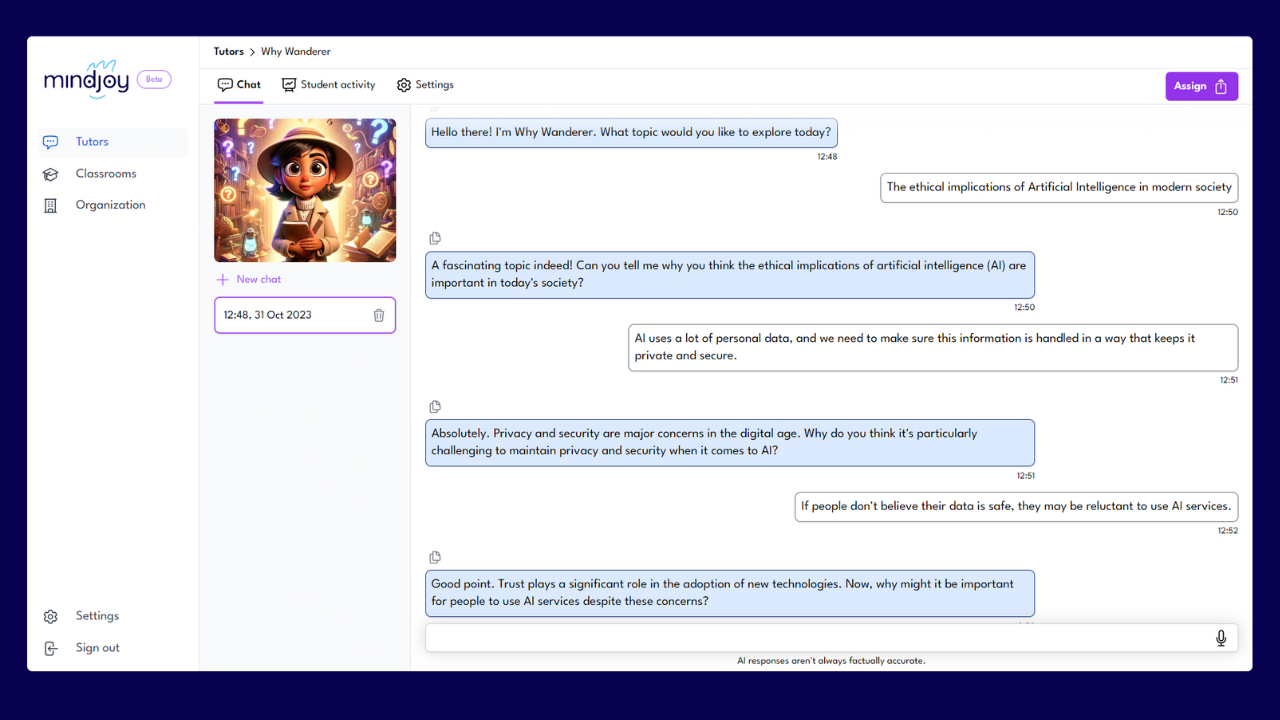
However, it's important to note that I do not use AI in every lesson. Many lessons are co-planned with AI behind the scenes, but students only interact directly when it will clearly add value.
Our school has policies against using AI for student assignments, even though we acknowledge that students may use it regardless. This realisation pushes us to evolve assessments towards evaluating application, critical analysis, and project-based skills. The goal being to shift our focus to higher-order competencies, with AI assisting in the process, rather than rote production of content.
There are certainly pitfalls if we allow AI to do all the thinking...
Over-outsourcing cognitive tasks to AI can undermine academic integrity and the development of critical skills, our students still need to learn and develop knowledge and skills. However, the opportunities are tremendous if implemented thoughtfully, making it a valuable tool in our educational toolkit.
Overall, I emphasise that AI should spark students' curiosity and not provide easy answers.
I believe that the role of the teacher is shifting towards enhancing the human side of education
How do you think the role of the teacher is changing in the world of AI?
I believe that the role of the teacher is shifting towards enhancing the human side of education. With AI aiding me in planning, emails, and lightening my administrative burden, I find that I have more time to interact with and support my students. Just like with any other societal change, I think it's important for teachers to educate themselves about what AI can and can't do. Students look up to us for guidance, and it's our responsibility to be well-equipped to support them.
I use AI to help me plan better and more-engaging lessons quickly. By inputting my teaching objectives or initial ideas, AI assists me in linking the curriculum to real-world situations that would excite my students. It also aids in organising group activities, hands-on projects, or even role-play exercises that help make abstract concepts more concrete for the students. Most of my AI usage is in creating fun, real-world activities.
How would you feel if your AI-enabled teaching tools and features requested a day off?
By now, it is so deeply woven into my workflow that I would feel like I was going at a snail's pace without it. I could still get my job done, but it would easily take 30-40% longer. Given my dyslexia, having AI to proofread my emails has been a game-changer and has sped up my daily routines.

Mindjoy is the go-to tool for schools and educators who want full control, while safely introducing AI into their classrooms and schools.
Matthew Wemyss will be facilitating a Mindjoy workshop on effectively integrating AI in the classroom! Apply to join.
1 Seymour Papert, a Mindjoy hero, has this idea about hard fun which states that learning and problem-solving can be both challenging (hard) and enjoyable (fun) at the same time. It challenges the traditional separation of "work" and "play" in education, emphasising that people are often most engaged when they are deeply invested in overcoming difficult tasks they're passionate about.
